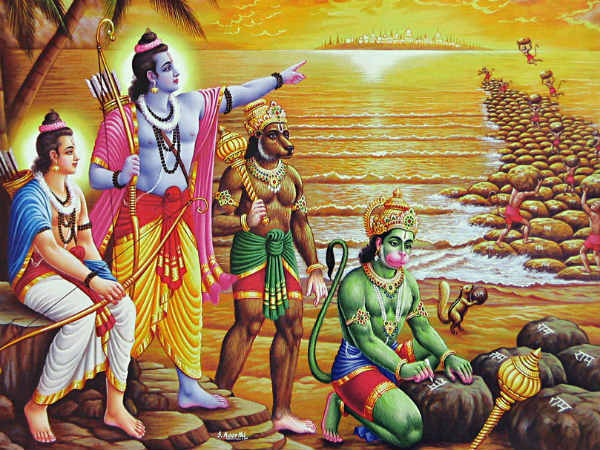History of Vastu Shastra
RAMAYANA is a treasured prehistoric eon of the Indian history. Be that as it may, yet, the age of the RAMAYANA can’t be said to have been settled past, regardless there wraths a discussion. Besides, in RAMAYANA, numerous introductions of a later age are, by and large, conceded. Bhattacharya (1963) remarked on the following issues: careful scrutiny of every last one of VASTU SHASTRA – related references, on the other hand, demonstrates that the portrayals, wherever they happen of the structures, towns and fortifications, are just about indistinguishable in all related verses.
This demonstrates that the later writers, even while introducing their compositions in the first epic, emulated the old method for depicting things. This progression of old convention might, subsequently, help us to reproduce the historical backdrop of Indian building design of an early period.

He, further, outlined a considerable measure of references from RAMAYANA and demonstrated the presence of decently created VASTU SHASTRA, around then. In his words, We see that the RAMAYANA holds, before us, a picture which demonstrates that Indian structural engineering had officially achieved a profoundly created stage. While the numerous storeyed structures and fortresses demonstrate the useful virtuoso of the individuals the enhanced stage. While the numerous storeyed structures and fortresses demonstrate the valuable virtuoso of the individuals, the embellished windows and the horanas and the enhancing figures vouch for their imaginative sense. The references to decently arranged high streets of the towns and the generally separated yards of the royal residences obviously demonstrate that a feeling of extent and symmetry did additionally not need in them. The relative extents kept up in the development of structures of distinctive sizes additionally indicate the same reality. Consequently, Kumbhakarna’s resting lobby was one yojana in width and twice as much long. This extent between the length and the broadness of a building was kept up by the Indian modelers of later times. Few of the references, which Bhattacharya had not said, are depicted here.
Description of Ayodhya Nagari
1. The standards of town arranging could be seen here, clearly, i.e., the measurements of the city, streets, burden component of the vehicles and the position of arrangements and parks for the beautification of the surroundings.
2. Asvamedha is to be performed on the north side of the Sarayu River, subsequently, after the standard of VASTU SHASTRA
3. The characteristics of sthapati specified by Vasistha are he ought to be dependable. A decent sthapati gets to be punyavana by developing silpa like building, admirably, and so forth. This demonstrates the status of building-development had climbed to the level of holy give up.
All the above references might be followed in the Balakanda of the RAMAYANA.
4. In Ayodhyakanda, we discover the references of kopabhavana, utilized by Kaikeyi, to express her disturbance against the ruler’s choice. This demonstrates the need of such room that, in later VASTU SHASTRA treatises, may be eluded as rodanagrha.
5. In the same Kanda, we could stamp the endeavors made by Rama to place fitting area and, eventually, chose to stay on Citrakuta Mountain, in light of the fact that that was the best area with charming climate, accessibility of building material, water and trees. At that point Rama assembled a kuti which could secure them from all seasons and relating vacillations in temperature, downpours, and so on. Ultimately, we could watch the ceremonies of grhapravesa function, performed by Rama.
6. In aranyakanda, we discover the depiction of asrama of Sutiksna Muni, which was alluded as the best (suyogya) in light of the fact that that was brimming with all common assets like water trees, wind, and light and, additionally, exceedingly sheltered from all woods creatures. Further, the quiet and charming environment empowered inhabitants to end up profound scholars.
7. In the same kanda, we discover the portrayal of Agasti Muni and his deliberations in making the “South Country” colonized. At that point, we discover the idea of agnisala, unmistakably demonstrating the spot set separated for flame dedications.
8. While saying the development of kuti, which Rama made close Godavari stream, we can stamp the commonplace style of structural planning emulated. He utilized all common building materials like grass, mud, wood, bamboo, and the time taken was less, with sufficient solace level for abiding.
9. In Kiskindhakanda, we can see the references of Maya, his girl Hema, and her companion Swayampravbha. Later, we discover Visvkarma is eluded as the inventor of Lanka.
10. In sundarakanda, we discover point by point depictions of Ravana’s castle, different houses in it like, citrrasala, panasala, sayanagrha, bhugarbhagrha, vilasabhavana, mandapa, vadhyasala, and so on. This demonstrates the advancement of VASTU SHASTRA and its legitimate application in development, even at RAMAYANAtime.
